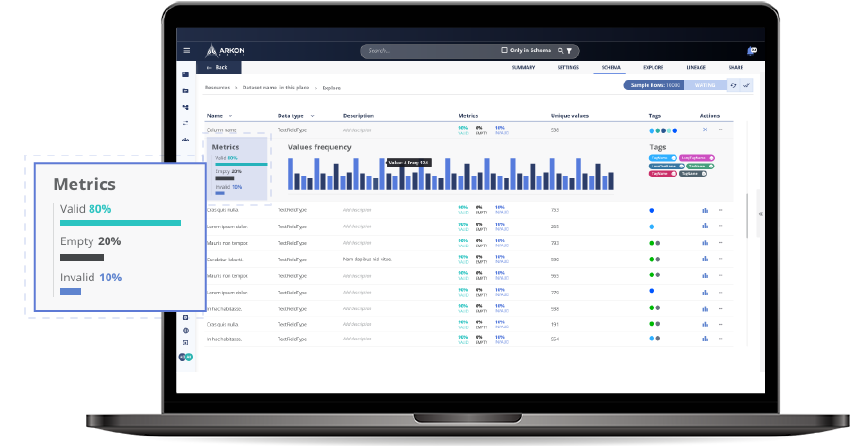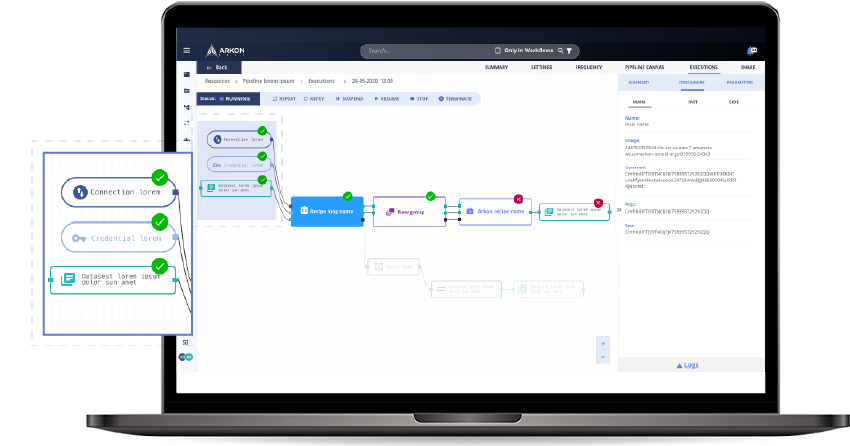Active Metadata: empowering metadata management
There are many elements that involve metadata when using it: schemas, data types, models, and so on, but the details mentioned above have something in common, which is passive metadata. On the contrary, there is active metadata, which is the topic that we will explain in this blog, where we hope to help you solve doubts about metadata management to evolve your next strategies.
If you’re wondering about active metadata, according to Gartner, it is continuous data analysis involving users, systems, infrastructure, governance, management, and reports. In other words, it is an ecosystem that is always active and allows you to harness all the information available in your data stack, which makes it possible to load, store, and exploit.
There are several situations where you can identify the work of active metadata. When surfing an eCommerce website, you may be seeking a current smartphone from one brand and you will realize that on your next visit to the website, most of the ads or images are linked to your first search. Something similar happens with movie recommendations in streaming apps (Disney+, Netflix, HBO, etc.).
Another example would be: imagine that you watched on a streaming app a Batman movie where the protagonist is Christian Bale. You may not know it immediately, but the app recognized Batman as one of your favorite sagas. In addition, Christian Bale movies will also be related to this choice; all of this is metadata. The moment when active metadata makes its appearance is when there is a list of recommendations of Batman and Christian Bale movies on your dashboard. That is active metadata.
Furthermore, it is important that you know some differences between traditional and active metadata.
Active metadata vs traditional metadata
As we mentioned before, in the digital and data management world there are 2 types of metadata. On one hand, we have passive metadata, which you must remember that it is a way to store static metadata in a catalog.
Passive metadata works like this: imagine that you record a single, then upload it to Spotify but you don't do anything for people to listen to it. The bad news is that the song won’t become famous magically. It is clear that your data, just like the single mentioned previously, does not work by itself, if you want success, you need to make your data work.
On the other hand, we have Active Metadata, which makes it possible for metadata to flow naturally across a data stack, that place where you upload, store, and boost your data. Furthermore, an active strategy provides the context of information and covers many business fields such as operations, social, logistics, and so on.
Active metadata is a keystone for governance and management in today's standards of collected information. Additionally, it has other benefits which are important to know.
Active Metadata benefits
When the Internet became part of our days, many companies used data most of the time in their internal and external processes and workflows. After that, the resources dedicated to data management increased but the results didn't change. This happened due to practices and tools not being enough, and organizations had to implement new practices.
Active Metadata gives the context of data that you need, but there are other important benefits:
- Data Cleansing: Active Metadata can determine if your data is useful or not in databases. A specialized platform can correct data if errors or inconsistencies are detected.
- Data Lineage: This step is fundamental to the people who work with data since it allows end-users to understand who manipulates data, and where it comes from, and identify its lineage, descriptions, terms, and owners.
- Data Governance: if you classify data through Active Metadata, you can hide it or make it visible to the users whom you assign access. This improves the control of data to enhance governance.
- Always on1: Active Metadata collects metadata 24/7 in data stacks (story, statics, users, tags, descriptions, etc.)
- Intelligent system: metadata is constantly processed to keep it linked. As a consequence, metadata will always work to improve itself.
- Decision-making: this process also detects trends or patterns in metadata, which makes it easier to forecast business development through recommendations or alerts.
The benefits that we enlisted are only an approximation of how Active Metadata can impact your company in a positive way.
Another field that is boosted by our main topic is management since metadata spreads to other areas as we mentioned in the benefits list. If you implement an accurate platform to have active metadata, you will also cover data management fields which imply to have data initiatives for better insights and business decisions.
What are real-life use cases of Active Metadata?
- In order to detect quality issues with auto profiling.

- Share information about your datasets without compromising the security of the information.

- Assign detailed levels of permissions and trace the ownership of metadata.
.png?width=850&height=446&name=screen_2%20(1).png)
- Extract metadata from different sources for BI purposes.
.png?width=850&height=446&name=screen_3%20(1).png)
Conclusion
As you can read along this content, Active Metadata is a changing agent for the business and data management world. It differs from traditional metadata thanks to its complex processes which involve governance, quality, lineage, collaboration, insights, democratization, and so on. Do you still doubt implementing it?
Learn more about this efficient strategy through Arkon Data Platform, and change the way you manage your data and metadata. Explore our platform and notice all we have to offer your organization.
1. Prukalpa, 2022.




